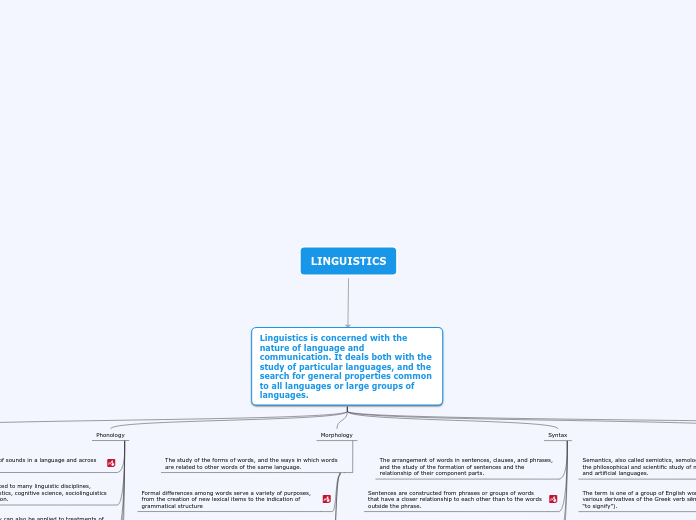
Phonetics
The system of speech sounds of a language or group of languages.
The study and systematic classification of the sounds made in spoken utterance.
The practical application of this science to language study.
EXAMPLE
An example of phonetics is how the letter "b" in the word "bed" is spoken - you start out with your lips together. Then, air from your lungs is forced over your vocal chords, which begin to vibrate and make noise. The air then escapes through your lips as they part suddenly, which results in a "b" sound.
Phonology
The study of the patterns of sounds in a language and across languages.
Phonology can be related to many linguistic disciplines, including psycholinguistics, cognitive science, sociolinguistics and language acquisition.
Principles of phonology can also be applied to treatments of speech pathologies and innovations in technology.
EXAMPLE
An example of phonology is the study of different sounds and the way they come together to form speech and words - such as the comparison of the sounds of the two "p" sounds in "pop-up."
Morphology
The study of the forms of words, and the ways in which words are related to other words of the same language.
Formal differences among words serve a variety of purposes, from the creation of new lexical items to the indication of grammatical structure
In some languages, the use of morphology to pack complex meanings into a single word is much more elaborate than in English
EXAMPLE
An example of a free morpheme is "bad", and an example of a bound morpheme is "ly." It is bound because although it has meaning, it cannot stand alone.
Syntax
The arrangement of words in sentences, clauses, and phrases, and the study of the formation of sentences and the relationship of their component parts.
Sentences are constructed from phrases or groups of words that have a closer relationship to each other than to the words outside the phrase.
The format in which words and phrases are arranged to create sentences is called syntax.
EXAMPLE
The boy jumped happily.
The boy happily jumped.
Happily, the boy jumped.
Semantics
Semantics, also called semiotics, semology, or semasiology, the philosophical and scientific study of meaning in natural and artificial languages.
The term is one of a group of English words formed from the various derivatives of the Greek verb sēmainō (“to mean” or “to signify”).
The word semantics has ultimately prevailed as a name for the doctrine of meaning, of linguistic meaning in particular.
EXAMPLE
For example, "destination" and "last stop" technically mean the same thing, but students of semantics analyze their subtle shades of meaning.
Pragmatics
Pragmatics deals with utterances, by which we will mean specific events, the intentional acts of speakers at times and places, typically involving language.
Logic and semantics traditionally deal with properties of types of expressions, and not with properties that differ from token to token, or use to use.
Pragmatics is usually thought to involve a different sort of reasoning than semantics. Semantics consists of conventional rules of meaning for expressions and their modes of combination.
EXAMPLE
[Kate is about to go out of her house]
Kate: Now I’ve lost my keys. No, I haven’t. Here they are. I mustn’t forget my keys.
Anderson, SR (1992). A-morphous morphology. Cambridge: Cambridge University Press.